Jason and his legendary search for the fabled Golden Fleece
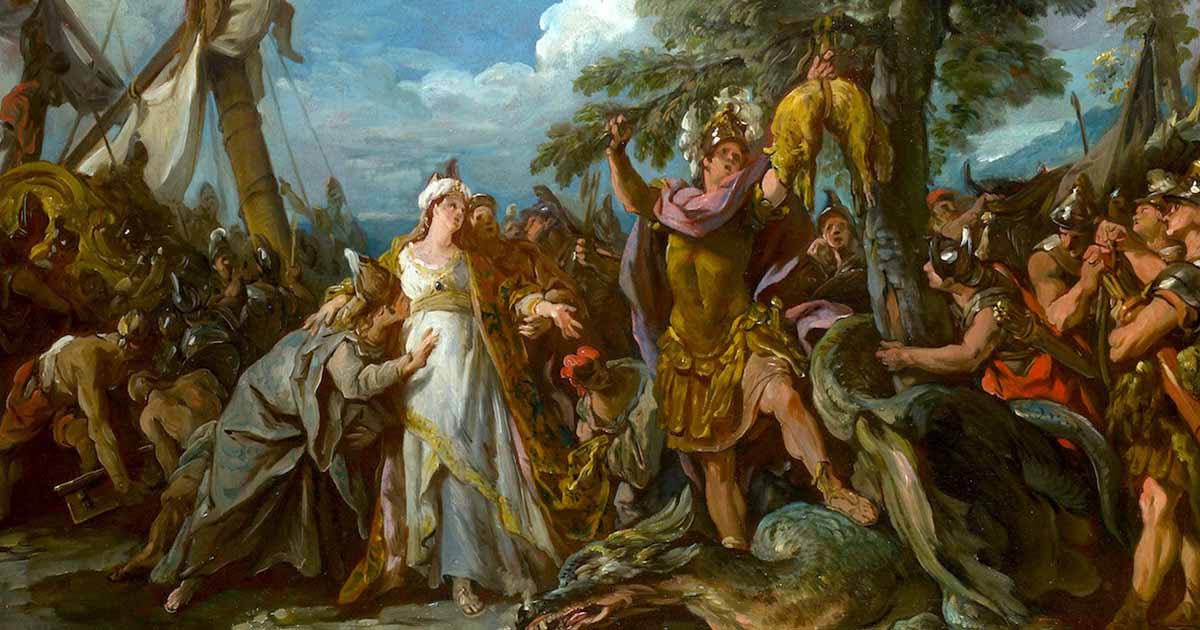
One of the most fascinating stories of ancient Greek mythology is the story of the Argonauts and the Quest for the Golden Fleece. Set in the pre-Trojan War era, this epic narrative unfolds during a time when legendary heroes like Hercules and Theseus were at the peak of their heroic deeds and adventures in ancient Greece. The quest for the Golden Fleece brings together a band of extraordinary individuals on a perilous journey across the seas, filled with mythical creatures, daunting challenges and divine interventions, making it a truly remarkable and timeless tale of heroism and valor.
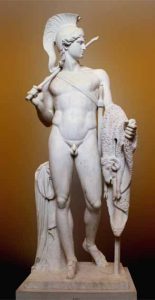
Jason with the Golden Fleece, an 18th century statue by Bertel Thorvaldsen. (Public domain)
The Story of Jason and the Famed Golden Fleece of Greek Mythology
Jason was the son of Aeson, descendant of god Aeolus and the rightful heir of the throne of Iolcus. His wife would later on be the famous sorceress Medea, daughter of King Aeetes of Colchis—where the Golden Fleece resided.
The story of Jason and the Golden Fleece began when Pelias, half-brother of Aeson (Jason’s father) and son of Poseidon, took the throne of Iolcus, bypassing his brother Aeson and locking him in the dungeons of Iolcus. Because of his wrongful actions, he received a warning from an oracle that a descendant of Aeson would seek revenge.
While Aeson was still in the dungeon, he managed to marry and father children, with Jason being one of his offspring. Pelias held the belief that Jason was the individual prophesied by the oracle to exact vengeance on him. He therefore commanded Jason to embark on an impossible mission, during which he believed and hoped that Jason would be slain. This quest entailed retrieving the Golden Fleece from the distant land of Colchis.
The Golden Fleece was said to have been created from the skin of a winged ram. In Greek mythology, the holy ram with the golden fleece—often referred to as “the Golden Ram”—played a crucial role in one of the stories of Zeus, whereby he used it to save Phrixus and Helle, the children of King Athamas.
According to the story, the two children were to be sacrificed after their step-mother convinced their father it was necessary. But seeing this injustice, Zeus intervened and before the sacrifice took place his holy ram flew down and took the children away, travelling a long distance through the air. Unfortunately, Helle fell from the ram during the flight and was killed. The ocean where she was said to have dropped still bears her name today—Hellespontus.
Phrixus continued his journey and arrived safely in Colchis, an area in the southern Caucasus on the eastern coast of the Black Sea, where the boy was welcomed by the King Aeetes of Colchis. In gratitude, Phrixus sacrificed the ram to Zeus and presented its golden fleece to King Aeetes.
The Golden Fleece was kept at the temple of the Ares (Mars) the God of War and a dragon—so large that it could surround a ship with its body—was tasked with guarding it at all times. This Golden Fleece became the central object of the famous mythological quest undertaken by Jason and the Argonauts to retrieve it, as depicted in the story of Jason and the Argonauts.
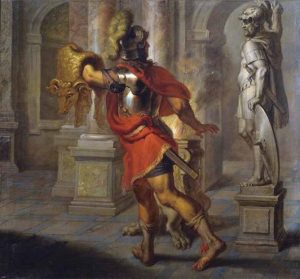
Painting of Jason and the Golden Fleece by Erasmus Quellinus II. (Public domain)
Jason’s Voyage to Retrieve the Golden Fleece
Following King Pelias’s commands, Jason embarked on his legendary voyage, known as Argonautica. To ensure its success, Jason recruited the finest warriors of the time, including renowned heroes like Hercules and Orpheus. They set sail on the specially crafted 50-oar ship, Argos, named after its creator Argus, son of Phrixus. Goddess Athena adorned the ship’s bow with a branch from her sacred ‘speaking’ oak tree in Dodoni.
Jason had the support of Goddess Hera, seeking revenge on King Pelias for not worshiping her. Their adventurous journey led them to Colchis, where Jason, invoking Hera’s wishes, requested the Golden Fleece from King Aeetes. Aeetes seemingly agreed but set Jason a daunting challenge. He tasked Jason with plowing the land using two bulls with metallic legs and flaming nostrils, followed by sowing the dragon’s teeth he provided. However, Aeetes concealed the fact that sowing the teeth would summon a formidable army of warriors from the soil to attack Jason.
Fortunately, Medea, daughter of Aeetes, aided Jason. She provided him with an ointment granting invincibility to fire and iron for a day, along with insights into her father’s scheme. Medea instructed Jason to hurl a stone at the warriors, inciting them to turn on each other, instigate a chaotic battle, and ultimately destroy themselves.
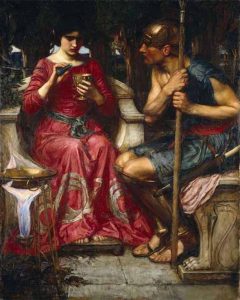
Painting of Jason and Medea by John William Waterhouse. (Public domain)
Medea’s Sorcery Crucial in Golden Fleece Legend
Thanks to Medea’s assistance, Jason successfully completed the challenge, compelling King Aeetes to concede that Jason could indeed retrieve the Golden Fleece. Nevertheless, Aeetes believed the dragon would kill him, and he also ordered his army to burn Jason’s ship, Argos, and kill the Argonauts. Medea once again stepped in to help and as a sorceress, put a spell on the dragon so that Jason could get the Golden Fleece from the tree were it was hanging.
Jason retrieved the Golden Fleece and left along with Medea as well as Argos and the Argonauts. Aware of her father’s pursuit, Medea took a drastic step by capturing her brother and tragically ending his life. She then scattered his remains throughout the vast expanse of the ocean, forcing her father into a prolonged search for his son’s scattered parts. This diversion bought them the essential time they needed to make their escape.
The return journey was arduous. Zeus, angered by Medea’s brother’s demise, presented numerous challenges to Jason and the Argonauts. These trials featured the alluring yet perilous Sirens, whose enchanting music lured sailors to shipwreck on their rocky island, as well as the dreaded Skylla and Charybdis, mythical sea monsters capable of ship destruction. Not to mention the colossal metallic guardian, Talos, in Crete, and a host of other formidable obstacles.
By overcoming the challenges and obstacles they faced on their journey, Jason and the Argonauts were redeemed for their sin of killing Medea’s brother. Finally, with the help of the God Apollo, they arrived back home, where Jason gave the Golden Fleece to King Pelias.
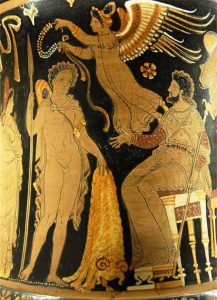
Jason returns with the Golden Fleece, shown on an Apulian red-figure calyx krater, c. 340–330 BC. (Public domain)
Jason and the Golden Fleece: Separating History from Legend
Most people believe that the story of Jason and the Argonauts is a work of fiction born out of the imagination of the ancient people. However, the word “myth” originates from the Greek word mythos, meaning “word,” “tale” or “true narrative.” This refers not only to the means by which it was transmitted, but also to it being rooted in truth. Mythos was also closely related to the word myo, meaning “to teach” or “to initiate into the mysteries.”
Based on this background, some scholars have argued that the ancient Greek myths have their root in reality. A famous example is the city Troy, which is central to Homer’s The Iliad. Long considered to be a city of myth, Heinrich Schliemann’s discovery of the actual site in 1868 elevated it to a place in history.
Likewise, Dr. Marcus Vaxevanopoulos of the Geology department of the University of Thessaloniki in Greece argued that there is some reality behind the story of Jason and the Argonauts. He suggested that the myth of Jason and the Golden Fleece actually described a Greek quest which aimed to bring gold from the area of Colchis, an area rich in gold and other metals.
This is not to say that sea monsters and enchanting sirens really existed, but that these descriptions were, in fact, a way for people to explain real—and perhaps perplexing—events using the knowledge and beliefs of their time. After all, research and historical records have shown that stories of sea monsters were simply a way for people to describe whales, walruses and giant squid, which were rarely seen in ancient times and which were quite terrifying to the people that saw them.
If Dr. Vaxevanopoulos is right, and the story of Jason and the Argonauts has its basis in reality, the next logical question is—how much of the story is real? Who were the gods that intervened in the lives of the mortals? What did the dragon represent? And was the Golden Fleece merely a symbol for real gold?